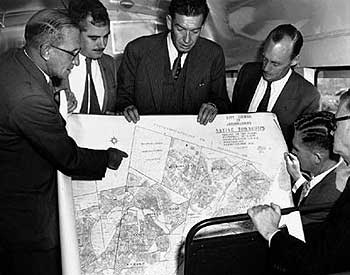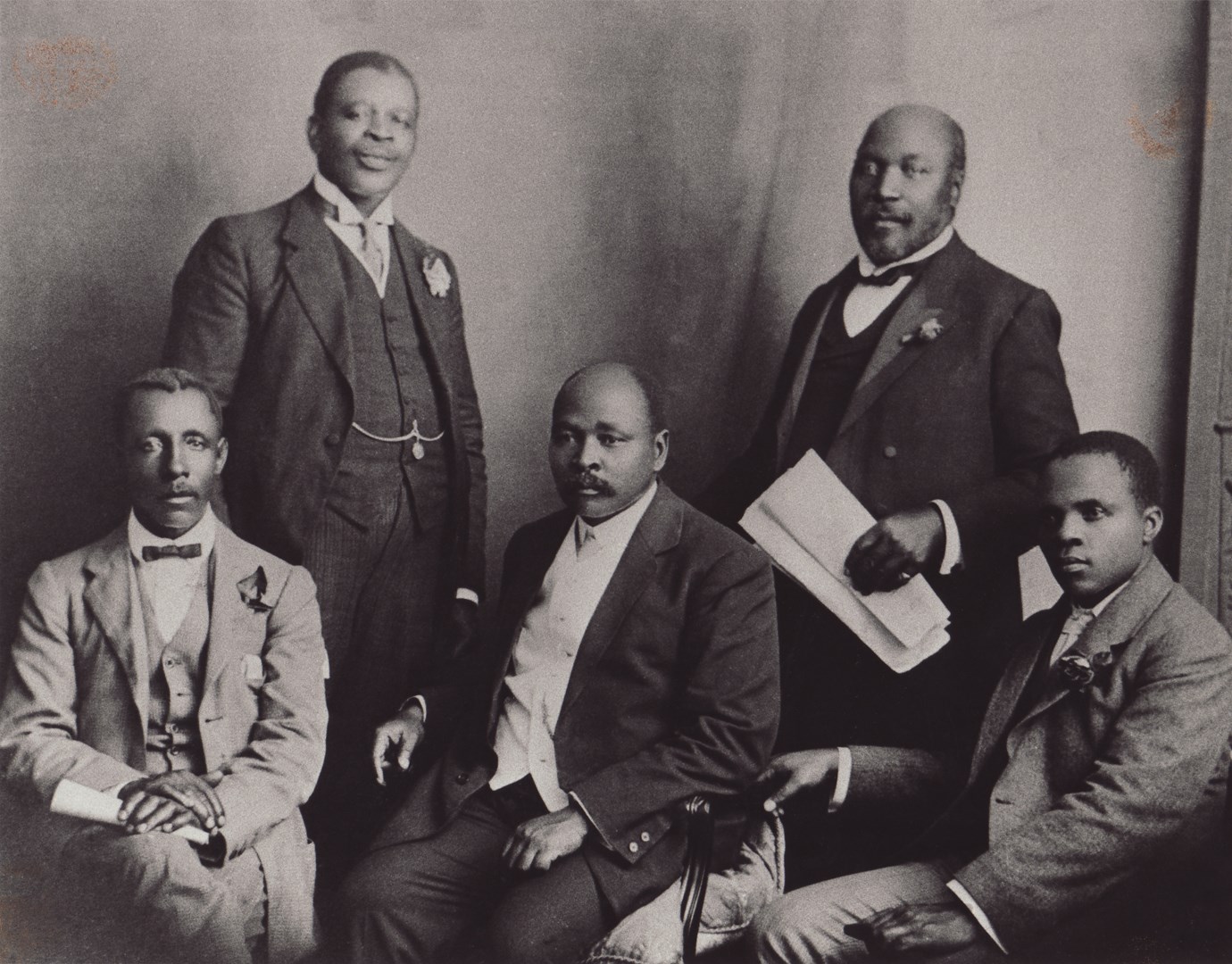Background and policy of apartheid
Before we can look at the history of the apartheid period it is necessary to understand what apartheid was and how it affected people.
What was apartheid?
Translated from the Afrikaans meaning 'apartness', apartheid was the ideology supported by the National Party (NP) government and was introduced in South Africa in 1948. Apartheid called for the separate development of the different racial groups in South Africa. On paper it appeared to call for equal development and freedom of cultural expression, but the way it was implemented made this impossible. Apartheid made laws forced the different racial groups to live separately and develop separately, and grossly unequally too. It tried to stop all inter-marriage and social integration between racial groups. During apartheid, to have a friendship with someone of a different race generally brought suspicion upon you, or worse. More than this, apartheid was a social system which severely disadvantaged the majority of the population, simply because they did not share the skin colour of the rulers. Many were kept just above destitution because they were 'non-white'.
In basic principles, apartheid did not differ that much from the policy of segregation of the South African governments existing before the Afrikaner Nationalist Party came to power in 1948. The main difference is that apartheid made segregation part of the law. Apartheid cruelly and forcibly separated people, and had a fearsome state apparatus to punish those who disagreed. Another reason why apartheid was seen as much worse than segregation, was that apartheid was introduced in a period when other countries were moving away from racist policies. Before World War Two the Western world was not as critical of racial discrimination, and Africa was colonized in this period. The Second World War highlighted the problems of racism, making the world turn away from such policies and encouraging demands for decolonization. It was during this period that South Africa introduced the more rigid racial policy of apartheid.
People often wonder why such a policy was introduced and why it had so much support. Various reasons can be given for apartheid, although they are all closely linked. The main reasons lie in ideas of racial superiority and fear. Across the world, racism is influenced by the idea that one race must be superior to another. Such ideas are found in all population groups. The other main reason for apartheid was fear, as in South Africa the white people are in the minority, and many were worried they would lose their jobs, culture and language. This is obviously not a justification for apartheid, but explains how people were thinking.
 Original architects of Apartheid Image source
Original architects of Apartheid Image source
Apartheid Laws
Numerous laws were passed in the creation of the apartheid state. Here are a few of the pillars on which it rested:
Population Registration Act, 1950 This Act demanded that people be registered according to their racial group. This meant that the Department of Home affairs would have a record of people according to whether they were white, coloured, black, Indian or Asian. People would then be treated differently according to their population group, and so this law formed the basis of apartheid. It was however not always that easy to decide what racial group a person was part of, and this caused some problems.
Group Areas Act, 1950 This was the act that started physical separation between races, especially in urban areas. The act also called for the removal of some groups of people into areas set aside for their racial group.
Promotion of Bantu Self-Government Act, 1959 This Act said that different racial groups had to live in different areas. Only a small percentage of South Africa was left for black people (who comprised the vast majority) to form their 'homelands'. This Act also got rid of 'black spots' inside white areas, by moving all black people out of the city. Well known removals were those in District 6, Sophiatown and Lady Selborne. These black people were then placed in townships outside of the town. They could not own property here, only rent it, as the land could only be white owned. This Act caused much hardship and resentment. People lost their homes, were moved off land they had owned for many years and were moved to undeveloped areas far away from their place of work.
Some other important laws were the:
Prohibition of Mixed Marriages Act, 1949
Immorality Amendment Act, 1950
Separate Representation of Voters Act, 1951
Resistance before 1960
Resistance to apartheid came from all circles, and not only, as is often presumed, from those who suffered the negative effects of discrimination. Criticism also came from other countries, and some of these gave support to the South African freedom movements.
Some of the most important organizations involved in the struggle for liberation were the African National Congress (ANC), the Pan-Africanist Congress (PAC), the Inkatha Freedom Party (IFP), the Black Consciousness Movement (BCM) and the United Democratic Front (UDF). There were also Indian and Coloured organized resistance movements (e.g. the Natal Indian Congress (NIC), the Coloured People's Organisation), white organized groups (e.g. the radical Armed Resistance Movement (ARM), and Black Sash) and church based groups (the Christian Institute). We shall consider the ANC.
The ANC
The ANC was formed in Bloemfontein in 1912, soon after the Union of South Africa. Originally it was called the South African Native National Congress (SANNC). It was started as a movement for the Black elite, that is those Blacks who were educated. In 1919, the ANC sent a deputation to London to plead for a new deal for South African blacks, but there was no change to their position.
 The South African Native National Congress delegation to England, June 1919 Image source
The South African Native National Congress delegation to England, June 1919 Image source
The history of resistance by the ANC goes through three phases. The first was dialogue and petition; the second direct opposition and the last the period of exiled armed struggle. In 1949, just after apartheid was introduced, the ANC started on a more militant path, with the Youth League playing a more important role. The ANC introduced their Programme of Action in 1949, supporting strike action, protests and other forms of non-violent resistance. Nelson Mandela, Oliver Tambo and Walter Sisulu started to play an important role in the ANC in this period. In 1952 the ANC started the Defiance Campaign. This campaign called on people to purposefully break apartheid laws and offer themselves for arrest. It was hoped that the increase in prisoners would cause the system to collapse and get international support for the ANC. Black people got onto 'white buses', used 'white toilets', entered into 'white areas' and refused to use passes. Despite 8 000 people ending up in jail, the ANC caused no threat to the apartheid regime.
The ANC continued along the same path during the rest of the 1950s, until in 1959 some members broke away and formed the PAC. These members wanted to follow a more violent and militant route, and felt that success could not be reached through the ANC's method.


